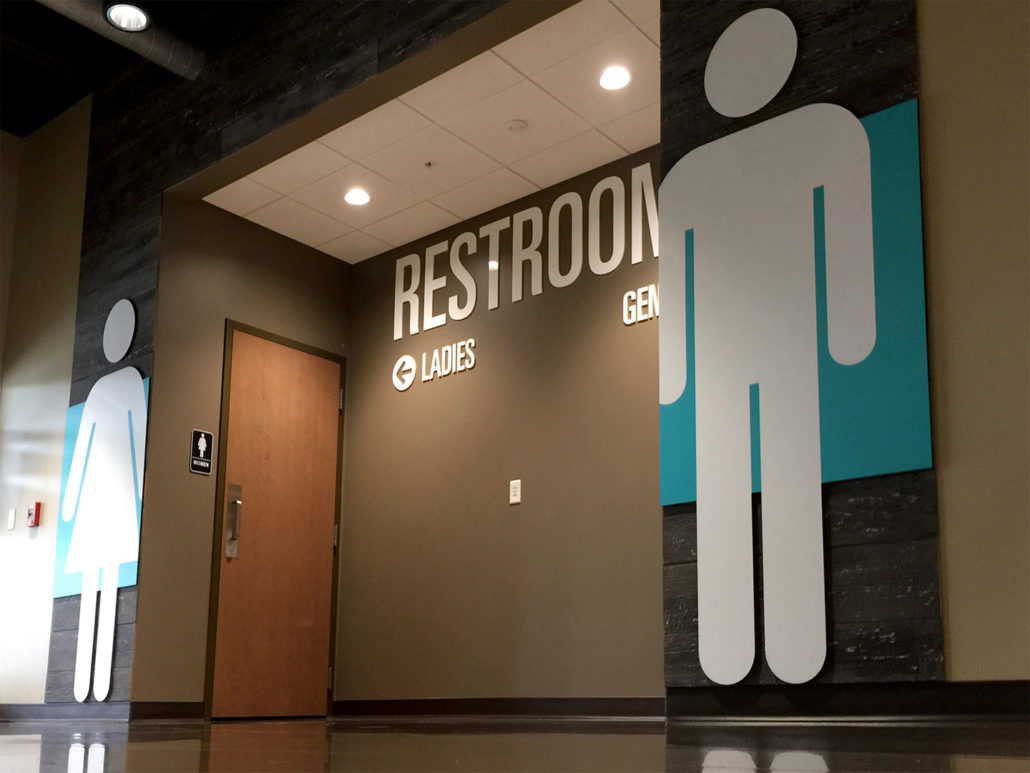Welcome … At the core, that’s what wayfinding signage says. Wayfinding signage guides visitors through your facility from the moment they arrive, informing them of your brand, your philosophy and your priorities. (Not to mention the location of the restrooms).
Does your facility say “welcome?” Would anyone entering your building immediately feel comfortable and confident that they could find their way? It may be time to conduct a wayfinding audit of your facility. Here’s a checklist of what proper wayfinding should accomplish. If newcomers to your building can’t easily do these things, it might be time to bring in a wayfinding expert to improve your facility’s welcoming status.
Visitors to your building should be able to:
- Orient themselves within the interior and exterior of the space.
- Confirm they are at the correct start or finish point of a multi-step journey within your building.
- Reinforce that they are traveling in the right direction.
- Be aware of any potential hazards in the space.
- Identify their destination upon arrival. And, most importantly,
- Escape safely in an emergency.
Wayfinding signage doesn’t simply mean directional signs indicating room numbers as visitors are coming off the elevators or signage for the sensory impaired. Instead, wayfinding is a comprehensive, well-thought out and executed plan that integrates your brand and informs a visitor’s journey through both the exterior and the interior of your facility.
Here are eleven essential factors to consider in a wayfinding site audit:
- Mode of transport. How do visitors arrive at your building? If they’re arriving by car, is the parking lot clearly labeled, with signs directing visitors to the proper entrance?
- Landmarks. Are there environmental landmarks (such as exterior signs, sculptures, gardens or awnings) that help visitors know they’re in the right place?
- Obstructions. Are there visual obstructions to the wayfinding signage, such as overgrown landscaping or newly placed signage that obscures previously placed informational signs? Are all wayfinding signs readable from the distance at which they are approached?
- Access points. How do people come and go from your building? What are the physical and aesthetic characteristics they will encounter along the access points?
- Decision points. Are there adequate directional signs at decision points in your space, such as a hallway that “T’s”?
- Naming protocol. Is there a cohesive theme for segregating spaces and identifying pathways and key areas? Are the names and symbols recognizable and understandable to people of diverse backgrounds?
- Flexibility. Is the chosen naming protocol flexible enough to be adapted to changing functionality in the space as the building’s uses fluctuate?
- A sense of place. Do the wayfinding signs create a sense of place, in which each zone or varied use of the space has its own distinctive feel?
- Maps. Wayfinding maps may not be necessary in smaller spaces, but in a larger facility or campus, maps are key to wayfinding and are a powerful navigation aid to convey advanced wayfinding guidance.
- Information desk or directory board. If there is no information desk, is one needed? If one exists, is it properly placed, and is it an appropriate height to be accessible to all visitors? If instead of an information desk, there’s a directory board, is it readable and simple for staff to update as the occupants and uses of the building change over time?
- Lighting. Adequate lighting on wayfinding signage (and throughout your building’s interior and exterior spaces) is essential. You also need to consider how the existing lighting in your facility works with the finishes of the signs you use. The wrong combination can create a glare that will render your signs unreadable.
If your building isn’t passing the muster when you conduct an unofficial site audit of your space, there is help to be had. Find a signage expert near you who can create a comprehensive and engaging wayfinding plan for your space is a worthwhile investment. It will ensure that your building says “welcome” to all visitors for many years to come.
Contact Signworks Indianapolis today to learn more.
